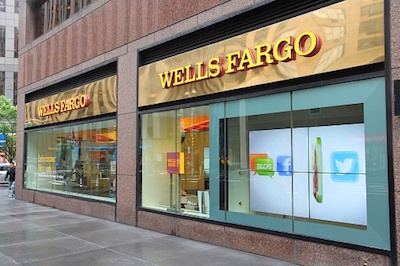The fallout from the Wells Fargo fraud scandal is growing and becoming as widespread as the consumer abuses Wells Fargo committed. As the investigation ensued, new details revealed that more of Wells Fargo’s customers were affected than was initially reported. The investigation also disclosed that the scandal had been going on for much longer than the bank first revealed. The Federal Reserve didn’t take the abuses to consumers lightly. They recently placed the heaviest sanctions ever on Wells Fargo after negotiating a consent decree to ensure greater accountability in the future.
The crackdown has banks and other financial institutions wondering how the debacle will affect their operations and growth projections. They are also wondering whether the glimmers of hope to lighten regulations, as promised by the Trump administration, will become a thing of the past.
Widespread Large Consumer Abuses at Wells Fargo Create Major Backlash
The fallout from the Wells Fargo scandal stands as a prime example of how easy it is to cast ethics aside when bonuses and jobs are on the line over unreasonable and unreachable quotas. In 2016, Wells Fargo managers and employees faced precipitous quotas for opening new consumer bank accounts, causing some employees to vie aggressively for bonuses and others to worry about protecting their jobs.
Somewhere along the line, employees formed an unscrupulous and secretive plan to create sham accounts to create the false impression that the numbers of new accounts were drastically higher than they actually were. Wells Fargo enjoyed high profits from shareholders along with applause from Wall Street.
The Consumer Financial Protection Bureau (CFPB), the Los Angeles City Attorney and the Office of the Comptroller of the Currency (OCC) blew the whistle when they fined the bank $185 million based on allegations that bank employees opened more than 2 million bank accounts or credit cards without their customers’ knowledge or permission from May 2011 through July 2015.
Beyond a quick apology, Wells Fargo responded to the allegations by swiftly firing over 5,000 employees.
The investigation initially revealed that about 2 million bank customers had been affected. Later reports revealed that the number of affected consumers was closer to 3.5 million and that the scandal lasted longer than early reports had indicated. Consumers reported being charged for auto insurance they didn’t need and weren’t aware of. The final investigation revealed that over 570,000 consumers were fraudulently charged for auto insurance premiums.
Some consumers complained that excess fees caused them to default on their loans or to have their cars repossessed. Other consumers complained about being wrongly charged for overdraft or other fees or having issues that created a negative impact to their credit scores.
Other allegations that surfaced included complaints by small business owners who said the bank used deceptive language to enforce “massive early termination fees.” In addition, Wells Fargo also received pressure for charging unwarranted mortgage fees to around 110,000 homeowners. The Justice Department also had their say with Wells Fargo for illegally repossessing cars from over 860 military veterans. Members of the military can’t legally have their cars repossessed without a court order.
The scandal caused a backlash to erupt within the board of directors and managers. News of the scandal hit Capitol Hill, where the Wells Fargo board and senior executives also faced harsh criticism.
Federal Reserve Cracks Down Hard on Wells Fargo With Unprecedented Penalties
The Federal Reserve sent a clear message to banks and other financial institutions about allegations of fraud, mishandling of accounts and breaching consumer trust by placing unprecedented penalties and other sanctions on Wells Fargo.
Federal Reserve Chair Janet L. Yellen made a public statement about the future lack of tolerance for bank fraud on her last day as Chair of the central bank. Yellen stated, “We cannot tolerate pervasive and persistent misconduct at any bank, and the consumers harmed by Wells Fargo expect that robust and comprehensive reforms will be put in place to make certain that the abuses do not occur again.”
The first casualty was the ousting of CEO John Stumpf.
In February, the Federal Reserve lowered the boom on Wells Fargo with the harshest consent decree ever issued. Wells Fargo is not permitted to grow beyond its current $1.95 trillion in assets until the Federal Reserve approves its remediation plan. This move cripples any growth opportunities for Wells Fargo despite its reports of 17% growth for recent fourth-quarter earnings.
Projections report that the Federal Reserve’s actions will reduce Wells Fargo’s profits by between $300 million and $400 million on a pretax basis. The bank will still be able to accept deposits and to make loans, but the consent decree stunts its growth and prevents mergers and major transactions until they prove they’ve made major governance changes.
The Wells Fargo board got hit especially hard when they faced extreme criticism from Congress members. Senator Elizabeth Warren called for the resignation of the entire board of directors. The Federal Reserve reports that three Wells Fargo board members will be replaced in April and a fourth board member will leave by the end of the year, citing that they failed to detect the problems and moved too slowly to rectify the situation.
In addition, Wells Fargo must enhance its corporate governance practices within 60 days and submit their plan for it to the Federal Reserve. As a follow-up measure, Wells Fargo must work with a third party to conduct a review of execution of their governance plans by September 30, 2018.
What Do These Sanctions Mean for the Future of Financial Institutions?
Since the financial crisis of 2008, banks have been looking for ways to gain some leniency on federal regulations. The Trump administration offered some hope with their plans to roll back regulations. With Congress applauding the harsh penalties on Wells Fargo, it has created new arguments on Capitol Hill over whether banks need more or fewer regulations. While the future of banks and financial institutions remains unclear, it’s safe to say that banks and financial institutions that enjoy unusually strong growth and large profits, can expect a higher degree of scrutiny.
Moving forward, financial institutions may want to take some clues from Wells Fargo about their new, higher corporate governance standards and take steps to implement a robust system of internal controls to prevent future mishaps that risk profits and reputation.





